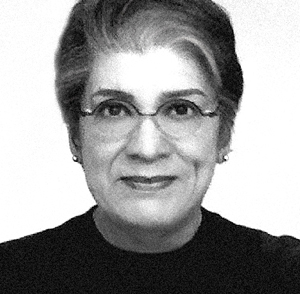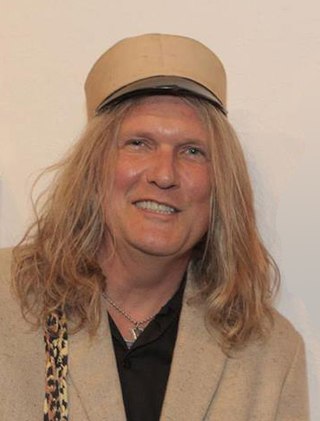The culture of Los Angeles is rich with arts and ethnically diverse. The greater Los Angeles metro area has several notable art museums including the Los Angeles County Museum of Art (LACMA), the J. Paul Getty Museum on the Santa Monica Mountains overlooking the Pacific, the Museum of Contemporary Art (MOCA), and the Hammer Museum. In the 1920s and 1930s Will Durant and Ariel Durant, Arnold Schoenberg and other intellectuals were the representatives of culture, in addition to the movie writers and directors. As the city flourished financially in the middle of the 20th century, culture followed. Boosters such as Dorothy Buffum Chandler and other philanthropists raised funds for the establishment of art museums, music centers and theaters. Today, the Southland cultural scene is as complex, sophisticated and varied as any in the world.

John Anthony Baldessari was an American conceptual artist known for his work featuring found photography and appropriated images. He lived and worked in Santa Monica and Venice, California.

The Arts District is a neighborhood on the eastern edge of Downtown Los Angeles, California in the United States. The city community planning boundaries are Alameda Street on the west which blends into Little Tokyo, First Street on the north, the Los Angeles River to the east, and Violet Street on the south. Largely composed of industrial buildings dating from the early 20th century, the area has recently been revitalized, and its street scene slowly developed in the early 21st century. New art galleries have increased recognition of the area amidst the downtown, which is known for its art museums.

April Greiman is an American designer widely recognized as one of the first designers to embrace computer technology as a design tool. Greiman is also credited, along with early collaborator Jayme Odgers, with helping to import the European New Wave design style to the US during the late 70s and early 80s." According to design historian Steven Heller, “April Greiman was a bridge between the modern and postmodern, the analog and the digital.” “She is a pivotal proponent of the ‘new typography’ and new wave that defined late twentieth-century graphic design.” Her art combines her Swiss design training with West Coast postmodernism.
The Woman's Building was a non-profit arts and education center located in Los Angeles, California. The Woman's Building focused on feminist art and served as a venue for the women's movement and was spearheaded by artist Judy Chicago, graphic designer Sheila Levrant de Bretteville and art historian Arlene Raven. The center was open from 1973 until 1991. During its existence, the Los Angeles Times called the Woman's Building a "feminist mecca."
Suzanne Lacy is an American artist, educator, writer, and professor at the USC Roski School of Art and Design. She has worked in a variety of media, including installation, video, performance, public art, photography, and art books, in which she focuses on "social themes and urban issues." She served in the education cabinet of Jerry Brown, then mayor of Oakland, California, and as arts commissioner for the city. She designed multiple educational programs beginning with her role as performance faculty at the Feminist Studio Workshop at the Woman's Building in Los Angeles.
David G. Ho is a Chinese-American artist.
Bruce Yonemoto and Norman Yonemoto are two Los Angeles, California-based video/installation artists of Japanese American heritage.

Offer Shlomi, better known as Vince Offer or Vince Shlomi, is an Israeli-American infomercial pitchman, screenwriter, actor and director. Offer's first major work was the 1999 comedy film The Underground Comedy Movie. He appears in television commercials for his own products including "ShamWow!", an absorbent towel; the "Slap Chop", a kitchen utensil; a lint roller called the "Schticky"; a liquid cleaner called "InVinceable"; and another kitchen utensil called "Crank Chop".

Thomas Lawson is an artist, writer, editor, and from 1991 to 2022 was the Dean of the School of Art & Design at California Institute for the Arts. He emerged as a central figure in ideological debates at the turn of the 1980s about the viability of painting through critical essays, such as "Last Exit: Painting" (1981). He has been described as "an embedded correspondent [and] polemical editorialist" who articulated an oppositional, progressive position for representational painting from within an increasingly reactionary art and media environment. Artforum called his approach to the medium "one of the most cogent and controversial" in the 80s.

David Schafer is an American visual and sound artist based in Los Angeles, whose practice integrates aural, textual, graphic and sculptural elements to create installations, public art and individual works that critics describe as immersive, spatial experiments. His approach combines self-consciously formalist aesthetics, a Pop Art sensibility, and postmodern Deconstructionist intent, often appropriating and reframing cultural motifs in order to investigate systems of historical and cultural memory, built space, and language. Schafer has exhibited nationally and internationally in museums, galleries and public spaces, including the Whitney Museum of American Art, MoMA PS1, The Drawing Center, MASS MoCA, Baltimore Museum of Art, Long Beach Museum of Art, SculptureCenter, and Vleeshal Middelburg. He has received awards from the Pollock-Krasner Foundation and National Endowment for the Arts, among others, as well as public commissions from the Public Art Fund of New York and the Los Angeles County Arts Commission. Los Angeles Times critic Leah Ollman describes his work as a "heady jumble" producing collisions, contradictions and convergences at the intersection of architecture, sound, sculpture, language and theory in order to "disrupt communication intentionally, incisively, through strategies of fragmentation and interruption." Schafer has taught sculpture, art theory, digital media and sound at institutions on the East and West coasts since 1985, and is currently on the Fine Arts faculty at Art Center College of Design in Los Angeles.

Judithe Hernández is an American artist and educator, she is known as a muralist, pastel artist, and painter. She is a pioneer of the Chicano art movement and a former member of the art collective Los Four. She is based in Los Angeles, California and previously lived in Chicago.

Anthony Ausgang is an artist and writer born in Pointe-à-Pierre, Trinidad and Tobago in 1959 who lives and works in Los Angeles. Ausgang is a principal painter associated with the lowbrow art movement, one of "the first major wave of lowbrow artists" to show in Los Angeles in the early 1980s. The protagonists of his paintings are cats -- "psychedelic, wide eyed, with a kind of evil look in their eyes".
Turtel Onli is an American artist, entrepreneur, author, art therapist, educator, and publisher.
Adam Mars is a contemporary artist based in Los Angeles, CA, USA known for his custom outfits and text-based paintings, which address the contemporary social experience. He has been referred to as "the Ed Ruscha of the Internet age."

Ginny Lloyd is an American artist, noted for her work with mail art, photocopy art, performance art and photography. She organized the Copy Art Exhibition in San Francisco in 1980 with programming devoted to promoting xerography. Her work was included in the exhibition, From Bonnard to Baselitz: A Decade of Acquisitions by the Prints Collection 1978–1988 and listed annually since 1992 in Benezit Dictionary of Artists.
Andy Wilf was a Los-Angeles based painter whose artistic practice consisted of drawing, painting and murals.
Larry Johnson is an American artist living and working in Los Angeles.

Steven Hull is an American artist based in Los Angeles. His projects cross boundaries typically drawn between personal and collaborative work, disciplines like painting, sculpture and installation art, and artistic fields including writing, music, art, illustration, design and performance. In his personal work, he frequently creates immersive, multimedia tableaux and exhibitions that Los Angeles Times critic Christopher Knight described as "carnivalesque hybrids of painting and sculpture whose chief aim is to turn visions of the conventional world upside down." He often mixes opposing artistic styles, irreverent conceptual strategies, and tones that range from playful to alienated or politically pointed. His collaborations include several artist-writer publications, including I’m Still In Love With You (1998–9), Song Poems, and AB OVO (2005); he also co-founded the artist-run space La Cienegas Projects and established Nothing Moments Press, which produced and published "Nothing Moments" (2007), a set of 24 limited-edition book collaborations between writers, artists and designers. These projects have been presented at MOCA at the Pacific Design Center, Rosamund Felsen Gallery, and Festival Supreme, among other venues. Hull has received a Joan Mitchell Foundation award for painting (2009) and a Louis Comfort Tiffany Foundation award (2001). He is married to artist Tami Demaree.
Dan Concholar was an American painter and arts organizer. Educated under Charles White at the Otis Art Institute, he was active in the Los Angeles scene in the 1970s and in New York City in the 1980s. His work was included in the "Dig This!: Art and Black Los Angeles 1960–1980" at the Hammer Museum in Los Angeles which travelled to MoMA P.S.1 in New York City in 2012.









